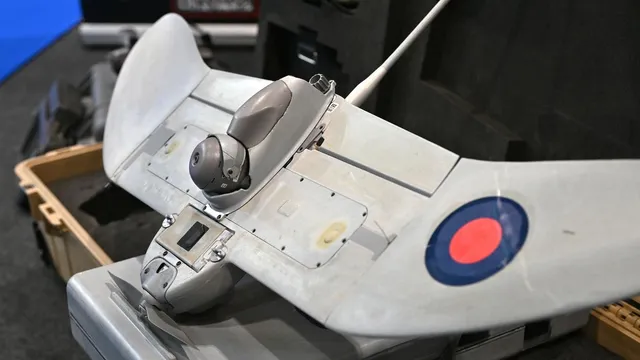
AeroVironment stock deemed overvalued amid questionable financial health
2025-06-26 00:00- AeroVironment has seen a revenue increase of 19.5% over the last three years, despite recent quarterly revenue drops.
- The company's profit margins and operating cash flow are significantly lower than industry standards.
- Current stock valuation at $235 is deemed overvalued, suggesting investors should consider waiting for a price dip.
Express your sentiment!
Insights
In the United States, AeroVironment has gained attention due to its increasing involvement in drone technology, particularly in applications for the Department of Defense. However, its financial performance metrics indicate concerning trends. Despite experiencing a revenue growth average of 19.5% over the last three years, its recent quarterly revenues fell by 10.2% compared to the previous year's figures. Additionally, the company's profit margins are considerably lower than industry averages, with an operating margin of only 4.4% and negative operating cash flow, reflecting its struggle to convert sales into actual profit. AeroVironment also carries a relatively low debt-to-equity ratio of 1.1%, suggesting a level of financial stability, albeit with a concerning cash-to-assets ratio of 4.5%. These figures indicate that while the company is not heavily leveraged, it struggles with cash flow management. The performance of AVAV stock during economic downturns reveals a history of significant declines; for example, the stock dropped 61% from its peak in early 2021 amid rising inflation yet managed to recover by the end of 2023. Despite the technical aspects of its financial health, the high valuation of AVAV stock is a point of contention. With a price-to-sales (P/S) ratio standing at 7.3 compared to the S&P 500’s 3.1 and a price-to-earnings (P/E) ratio of 164.3 against a benchmark of 26.9, AeroVironment is seen as overpriced. This premium valuation might be driven by growing demand for drones and new product offerings, such as the recent BlueHalo acquisition, which are expected to enhance the company’s sales potential in the long run. In summary, while AeroVironment is involved in a growing sector, its financial performance and stock valuation appear misaligned, suggesting that investors may want to consider waiting for a price dip before investing in AVAV stock. The overall assessment positions AeroVironment unfavorably given its weak metrics in profitability, resilience during downturns, and the consequences of elevated stock prices.
Contexts
The demand for drones in military applications has surged dramatically over the past decade, reflecting rapid advancements in technology and an evolving landscape of modern warfare. As countries recognize the strategic advantages that drones provide—such as enhanced surveillance, reconnaissance capabilities, and precision strike options—the military sector has increasingly integrated these unmanned aerial vehicles (UAVs) into their operational frameworks. Drones offer operational efficiencies that traditional manned aircraft cannot match, including lower operational costs, reduced risk to human life, and the ability to perform missions in hostile environments. This shift has led to a redefinition of military strategies, as drones facilitate real-time intelligence gathering and enable forces to maintain situational awareness during combat operations. The use of drones for reconnaissance and surveillance has proven particularly transformative. Equipped with high-resolution cameras, sensors, and advanced communication technologies, drones can gather critical intelligence without exposing personnel to ground threats. Military forces are leveraging drones for both tactical operations—monitoring enemy movements and battlefield conditions—and strategic purposes, such as assessing geopolitical stability. Moreover, the ability to conduct long-endurance missions means that drones can remain airborne for extended periods, significantly enhancing operational capabilities while minimizing costs. Weaponized drones, also known as Unmanned Combat Aerial Vehicles (UCAVs), are becoming increasingly prominent in military arsenals around the world. They provide the ability to carry out targeted strikes with precision, reducing collateral damage and increasing the effectiveness of military engagements. The ethical implications of using drones for targeted killings have sparked significant debate; however, proponents argue that their use can lead to a more judicious application of military force. The development of autonomous drones, capable of executing missions with minimal human oversight, raises further questions about accountability and the future of warfare. In response to the growing demand for military drones, defense contractors and technology firms are investing heavily in research and development to create more sophisticated UAV systems. Innovations in artificial intelligence, data analytics, and materials science are contributing to the next generation of military drones, enhancing their capabilities while addressing current limitations. Furthermore, as the competitive landscape intensifies, countries are increasingly pursuing indigenously developed drones to ensure operational autonomy and reduce reliance on foreign suppliers. As this demand continues to rise, it is clear that drones will play an indispensable role in the future of military operations, signifying a paradigm shift in combat tactics and defense strategies.